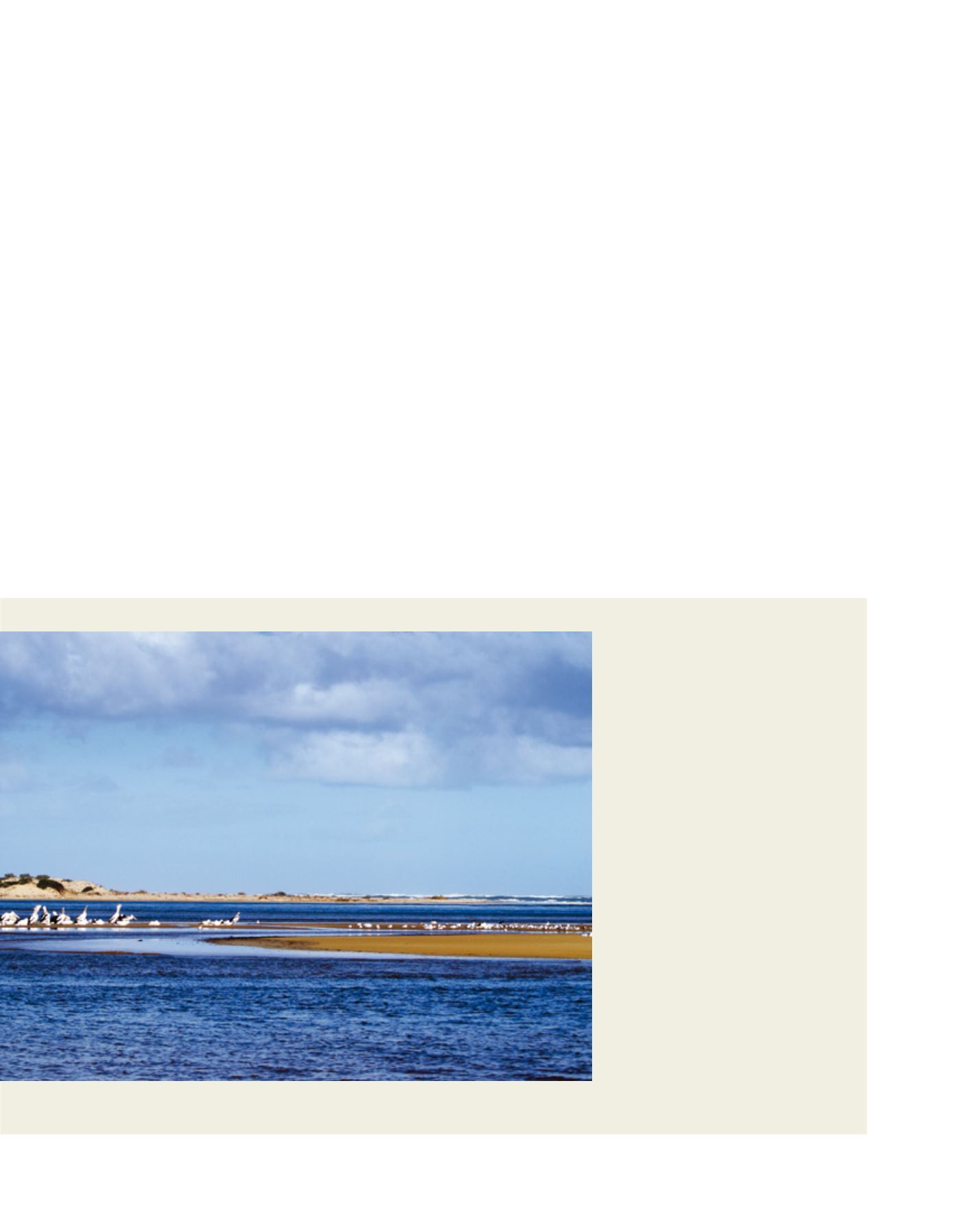

[
] 79
T
ransboundary
W
ater
M
anagement
ning. Indeed, the tagline for the new cooperative effort was: ‘Six
governments working in partnership with the community’.
Functional institutions developed to underpin this (reflecting
the aim of political, bureaucratic and community-level coopera-
tion). These were the Murray–Darling Basin Ministerial Council
(political arm); the Murray–Darling Basin Commission (bureau-
cratic arm) and a Community Advisory Committee. In practice,
while this cooperation produced many good initiatives including
a successful salinity and drainage strategy, improvements in algae
management and better water accounting, it did not prevent an
overall increase in water extraction as this was driven by national
and global market forces.
Another intense drought in 1991-95 reduced average rural
industry production by around 10 per cent, despite diversions
actually increasing by about 8 per cent to support the northern
basin’s expanding cotton industry.
With awareness that further increases could not be supported,
this crisis created an opportunity to ‘make good’ on earlier commit-
ments. This time, the Murray–Darling Basin Act 1993 gave legal
force to a new cross-jurisdictional, cooperative governance model.
The Council of Australian Governments (COAG) formed to oversee
national-level cooperation on issues of strategic importance and
cross-jurisdictional concern, including the environment. COAG
(consisting of the Prime Minister, State Premiers, Territory Chief
Ministers and the President of the Australian Local Government
Association) was underpinned by a Murray–Darling Basin Ministerial
Council (MinCo) which had the responsibility of bring-
ing the Murray–Darling Basin Act to life.
Cooperative reform to limit consumption
The partnership embodied inMinCo initiated the first thor-
ough basin-wide audit of water use, completed in 1995.
Confirming that river health issues would become critical
if diversions increased (likely under the existing allocation
system), the audit also predicted risks to long-term water
security for existing irrigators and critical human use. This
prompted MinCo, after independent review, to institute
the first ever limit (the ‘Cap’) on consumptive water extrac-
tion. This was an important initial step towards finding
a sustainable limit for extraction. However, it reflected
capping at existing consumption levels rather than any
thorough investigation. Indeed, despite Queensland
joining the Murray–Darling Basin Agreement in 1996 and
the Australian Capital Territory in 1998 (meaning that
all basin governments were signatories for the first time),
overall diversions actually continued to increase until
1999 through the legacy of over-allocated entitlements to
water and different state accounting systems.
The National Water Initiative (2004) followed: a
blueprint for reform towards addressing over-allo-
cation, enhancing security of water access rights and
removing the remaining barriers to trade.
From July 2012 to January 2013, around 1.2
billion litres of stored environmental water was
released, coordinated to maximize outcomes and
efficiency. Firstly, it improved instream health
along the Murrumbidgee, Goulburn and Murray
rivers as flows moved downstream. Through
mobilizing carbon and reducing nutrient loads
and salinity, conditions improved for native fish
and riverine vegetation. Secondly, a timed pulse
of water (December 2012) acted as a trigger
for spawning and recruitment in large-bodied
native fish. Finally, on reaching the end of the
River Murray system, flows were sufficient to
breach weirs, flush wetlands and improve the
estuary (important for migratory fish movement).
With increased food for wading birds in the
Ramsar-listed Coorong near the Murray Mouth,
aerial waterbird surveys detected an increase in
waterbird diversity and increased breeding due to
a marked increase in mudflat food sources and
habitat. The endangered southern bell frog has
also been recorded in a number of wetlands.
This complex delivery involved cross-jurisdictional
accounting and the passage of large flows
through four river systems and across borders.
Its achievement drew on many cooperative
relationships, with water contributed by the
Commonwealth Environmental Water Holder,
MDBA (through TLM), state governments and
private donations. Its delivery was made possible by
ecological and technical experts working together
with water delivery partners (such as catchment
management authorities) and river operators
responsible for controlling storage releases.
This cooperative effort produced the largest ever
targeted delivery for environmental benefit purposes.
A healthier Coorong (a TLM icon site) after rainfall and environmental water releases reconnected the
Lower Lakes with the sea
Image: Denise Fowler, 2011


















